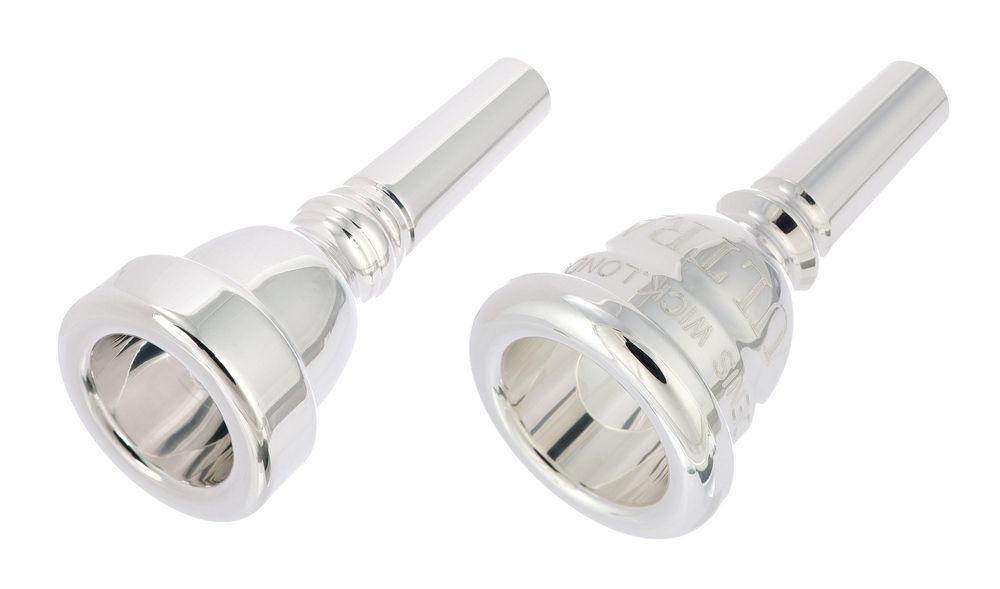3. From Beginning to End
Although Adolphe Sax, who is exclusively remembered for his work on wood wind instruments today, had a hand in their development, both horns are in fact brass wind instruments. At first glance, the two intruments seem almost identical, even if the alto horn is obviously the slimmer of the two.
The designation "alto horn" can be applied to many different instruments, from the French horn to the trumpet. The most familiar shape of the alto horn is the tuba shape, which we, too, will focus on. The euphonium's construction exclusively rests on the design of the tuba. In spite of their similar appearances, the basic pitches of the instruments differ. The euphonium is pitched in b-flat, one octave lower than the trumpet and one octave higher than the tuba. The alto horn is most frequently pitched in e-flat, between the trumpet and the euphonium in sound.
The individual elements of the two instruments share some structural characteristics, though: mouthpiece, resonance tube, valves and bell.
The mouthpiece:
Both alto honrs and euphoniums use cup mouthpieces, with only few manufacturers preferring funnel mouthpieces. In contrast to the tenor and baritone horns, one and the same mouthpiece cannot be used for the two instruments. If you want to play both, you'll need to get different mouthpieces. The shaft size is especially important when buying a euphonium mouthpiece. Like the trombone, the euphonium mouthpiece comes in three different shaft sizes. But worry not, the delaer of your choice will be able to help you with this.
The bore of the two instruments differs greatly. The alto horn's bore is about 11mm. The euphonium's bore is wider generally, beginning at 15mm and increasing to up to 16.2mm, depending on the model. With identically pitched instruments, a larger bore makes the embouchure more difficult and the sound richer.
The valves are significantly different from those on tenor or baritone horns. The latter feature rotary valves, while the alto horn and the euphonium both feature Perinet valves, as does the standard trumpet. The number of valves is different on the two instruments. Alto horns consistently have three valves, while the euphonium is a little more sophisticated in this respect. Beginner models also feature three valves, configured as front-action valves or top action valves, depending on whether they are depressed from the front or from the top. The next option is the four-valve euphonium, with a choice of a top or lateral compensating valve. The side valve is played with the left. If the valve is added at the top, musicians call the configuration an in-line valve. In contrast to the alto horn, the Perinet mechanism is fully compensated, which allows for better intonation.
Both instruments feature water valves, either single or double, depending on the manufacturer.
The size of the instruments' bells, which usually point straight upwards, is an indication of their different sound. The alto horn's bell is usually 18cm in diamater, compared to the euphonium's larger 28cm.
In addition, some manufacturers offer a choice of bells in different sizes. A larger-diameter bell results in a more brilliant sound, while the embouchure is a little more tricky as well. If the manufacturer offers the choice, players can also opt for a compensator with a separator on the main tuning slide.



